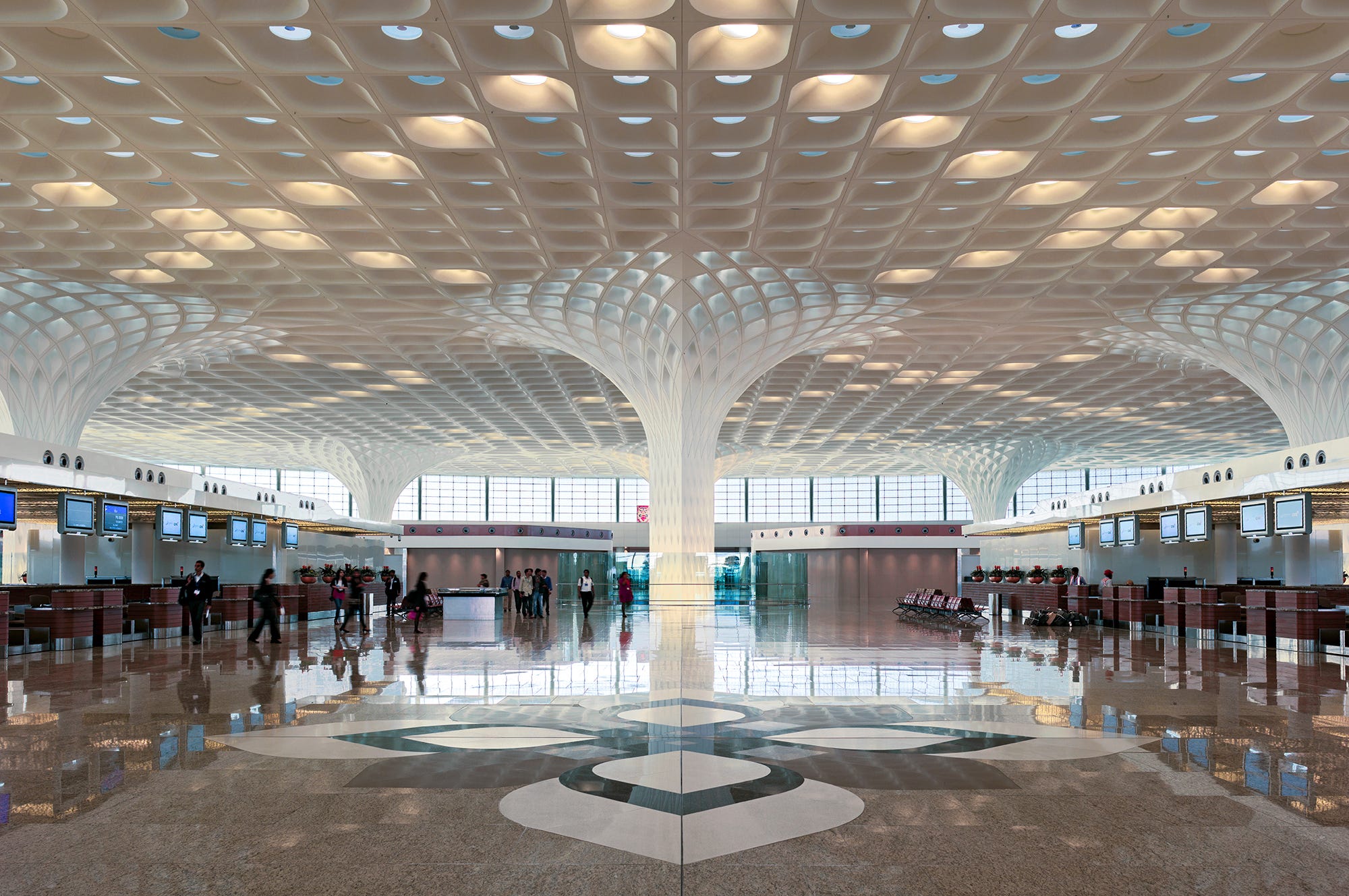Table Of Content
- Airport business solutions for the aviation industry
- Passenger terminal layout and design
- Runners-up: ‘Six Lane City’ by Riki Rozenberg, Evelyn Kreslavsky, Mai Whiteson, Tel Aviv University, Tel Aviv, Israel
- Intermodal transportation
- Queen Alia International Airport / Foster + Partners
- 'Aerial Futures' Explores the Relationship Between Cities and Their Airports
- Winners of People’s Choice Award: ‘Y3M’ by Chai Yi Yang and Ng Yi Ming, University of Malaya, Kuala Lumpur, Malaysia
- Top architecture stories

The terminal building and transportation center together enclose a floor area of 1.3 million square meters and were designed to accommodate 50 million passengers each year by 2020. Huge airport projects currently under construction—like Daxing International Airport’s Zaha Hadid-designed terminal in Beijing and those in U.S. cities like New Orleans, Tampa, Orlando, and Los Angeles—will showcase upgraded and modernized designs. At its worst, airport design is a confusing blend of bad carpeting and claustrophobic paneling that can leave you searching hours for a bathroom. But a new class of airports are leaving the dark terminals of the past behind, opting instead for light-filled spaces that provide both function and inspiration.

Airport business solutions for the aviation industry
The uppermost structure is well braced to withstand the seismic effects and typhoon currents that frequently occur in the vicinity. Large windows create a light-filled interior with views of the Caucasus Mountains, and a golden, wood-like structure in the center of the terminal provides a meeting point for passengers. Architect Ben van Berkel designed the building with a large span, open spaces, and high ceilings—a nod to the great railway stations of the past. Early projects also led to a new milestone in airport design – the formal recognition that up to 30% of travellers at large hub airports are simply connecting to another flight. As a light, airy addition to Keflavik Airport, this terminal was made by Andersen & Sigurdsson Architects in Reykjanesbær.
Passenger terminal layout and design
Market changes aren’t the only reason airports should be designed (or re-designed) with flexibility in mind. With the massive increase in security concerns since 9/11, Davies says he believes airports must make good use of emerging technology to be able to stay up-to-date. The dedicated flight connection centre (FCC) built by the firm at Heathrow’s Terminal 1 was one of the first facilities to provide specialist services for people with connecting flights in the world. FCCs are now common at major airports where they have been found to simplify the process of finding an ongoing connecting flight. As the fifth busiest airport in the United States, Denver International has become a true travel hub and a well-known landmark. Recalling snowcapped mountains and inspired by patterns and materials native to the Rocky Mountain region, the iconic roof rises to 150 feet at its highest point.
Gensler and Moody Nolan Reveal Ohio's New Airport Terminal - ArchDaily
Gensler and Moody Nolan Reveal Ohio's New Airport Terminal.
Posted: Tue, 29 Aug 2023 07:00:00 GMT [source]
Runners-up: ‘Six Lane City’ by Riki Rozenberg, Evelyn Kreslavsky, Mai Whiteson, Tel Aviv University, Tel Aviv, Israel
Themed Awwal Bait, or The First House, the event intertwines commissioned works with never-before exhibited historical artifacts to convey a holistic perspective of the Islamic arts. The Biennale, curated by Sumayya Vally, now in its inaugural edition, will be open from January 2023 to April 2023. Other contractors involved in the modernisation programme include AECOM, Worldwide Flight Services, Granite Construction, Burns & McDonnell, and Hill International.
Intermodal transportation
Runner-up Samantha Pires’ design, the ‘Newark Airport Biophilic Headhouse and Community Nexus’, brings to reality the popular concept of ‘airport-city’, or aerotropolis. “The general shape of the airport combines the complexity of the form and the ideology of infinity by creating the circular and endless concourse system,” said Wang. The rapid rate of change in aviation brought about by disrupting technologies and environmental constraints makes it hard to imagine what airports will look like in the next couple of decades, let alone in 2075. SOM created an overhead light modulation system using glass skylights and thousands of aluminum louvers.
A deliberate lack of ornamentation provides a clear vision for understanding spatial functions and circulation within the large complex. Kapil Malik, FAIA, is an award-winning architect and designer whose work has been featured in a wide range of architectural journals and publications around the globe. Maintaining a delicate balance between global sophistication and local response, his work has simultaneously enhanced, defined and blurred the lines between a range of building typologies, including hospitality, mixed-use, airports and transportation. He believes in the potential of projects to become catalytic, not only for the communities in which they reside, but as models for sustainable architecture.
The industry has continued to expand making travel simpler, faster, and luxurious to meet the demand for air travel. Today, airport designs have taken us to the next age of aviation where some designs are breaking world records including the world’s biggest terminal in Istanbul to the largest indoor waterfall at Changi airport. More than 100 airports serving at least 10millon passengers each year is a huge challenge put forth architects to design a space which is more secure and functional transporting such an influx of crowd overseas. For the safe landing and takeoff of aircraft, lighting and radio navigational aids are provided.
Winners of People’s Choice Award: ‘Y3M’ by Chai Yi Yang and Ng Yi Ming, University of Malaya, Kuala Lumpur, Malaysia
Built on an artificial island in the Bay of Osaka, it’s the first “ocean” airport in the world and can handle 100,000 passengers a day. To see just where airport design is headed, we’ve rounded up the 14 most beautiful airports currently operating around the world. These factors determine where planes can land safely over 95% of the time, where obstructions that protrude into the flight path must be removed, and where the noise from planes might be intolerable for nearby homes, businesses, and outdoor spaces. The conditions within ten miles of the airport site will frequently impact the outcome of the airport’s construction. Site placement and runway orientation rely heavily on the airspace and accompanying ground tracks along the runway’s take-off and landing corridors.
Top architecture stories
Alternatives A, B, and C focused on westward airport expansion, including new runways, a terminal, a concourse for Tom Bradley International Terminal (TBIT), and automated people mover (APM) systems connecting to the central terminal area. Inspired by the Bedouin tents, the airport at Jordan, features the unique modular concrete domes forming the roof canopy that spans the entire terminal building. These modular arrangements of domes allow the structure for the needed future expansion and provide shade from the intense sunlight during the day.
Clerestory windows combine with glass skylights that punctuate the fabric roof’s mast tops to further bring in natural light alongside the diffuse light through the fabric. It will include vast green spaces, including a central 10,000-square-metre covered garden that can be enjoyed by the 31 million people expected to travel through the facility each year. A Foster + Partners and Buro Happold consortium has been announced as the winners of the competition to design the new CPK airport, situated between Warsaw and Łódź, in Poland. The project is envisioned as a 21st-century transport interchange, bringing together air, rail, and road.
Gensler designed the Terminal 4.5 Core project, with Hensel Phelps as the construction contractor. Employing a pioneering construction approach known as Offsite Construction and Relocation, MSC South will be fabricated in nine segments at a distance of about a mile and a half from the main project site. The TBIT Core, comprising three levels, will facilitate seamless access to the upcoming APM train’s West Central Terminal Area (CTA) station through an elevated pedestrian pathway over World Way. “The great leap in technology advancement would manifest a subversive paradigm transformation towards current airport morphology, from a centralised mass into a vessel-like network,” they explained.
The void the firms carved through the thick central floor plate offers an impression of spaciousness, and introduces curvaceous shapes around wire mesh–covered, softly illuminated mezzanine balconies that are echoed across the ceiling as layered coves. O’Neil Construction was the contractor for the TBIT renovation, with equipment supplied by KONE and Schindler. Delta’s new West Headhouse and Delta One check-in and ticketing lobby at LAX’s Terminal 3 opened in May 2023. Researching requirements marked the first phase, followed by developing alternative solutions. The third phase, starting in 1997, focused on assessing environmental impact, with public consultations held from 1999 to 2003. LAX occupies 1,386ha of land and is the busiest origin and destination airport in the world.







